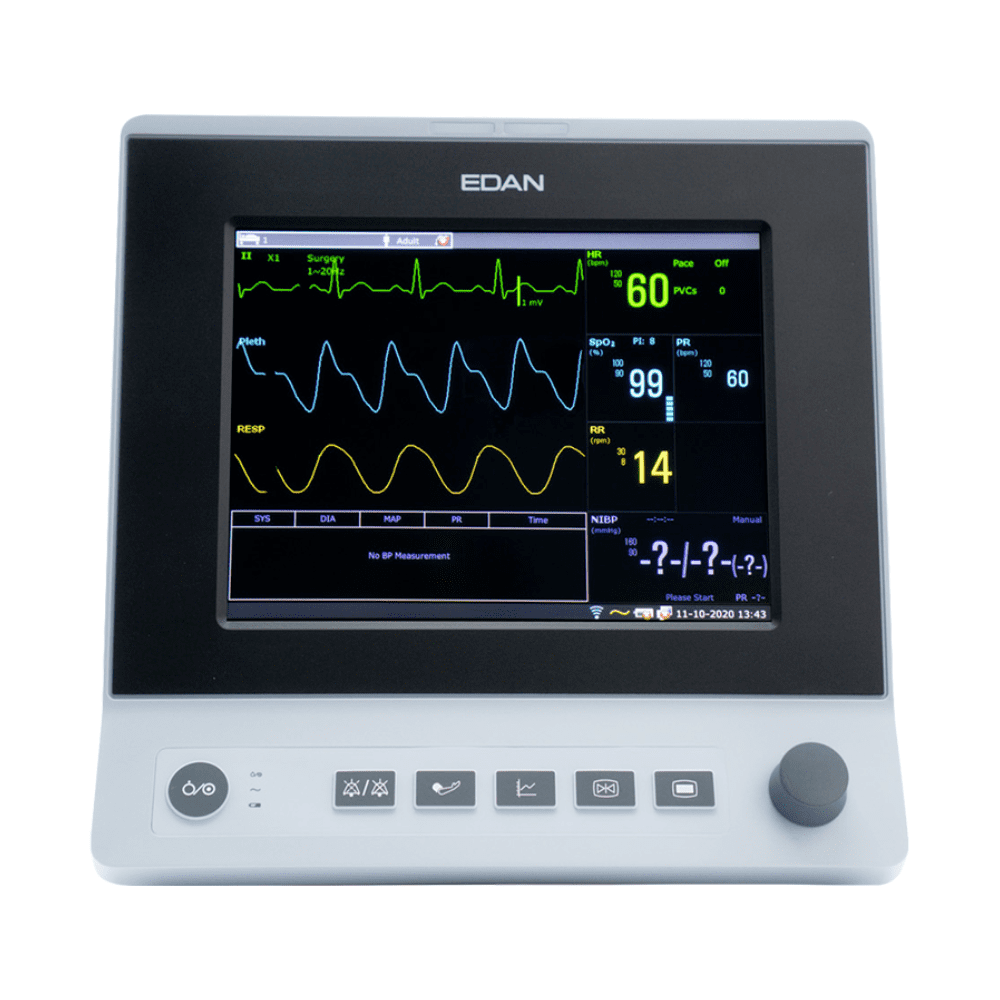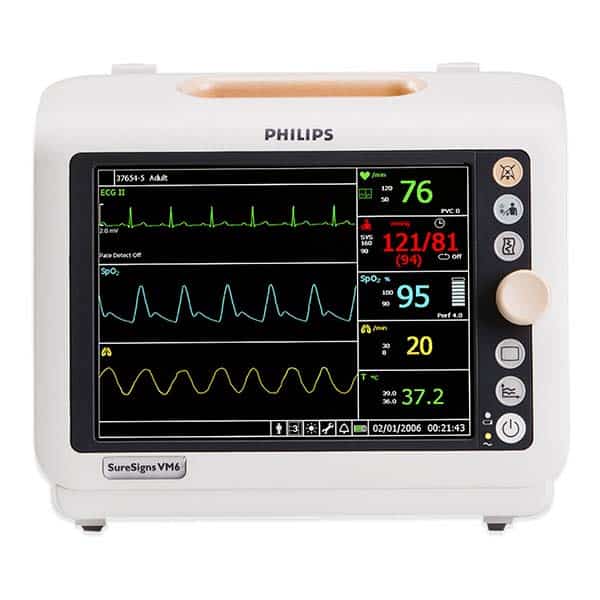In today’s fast-paced healthcare environment, the accuracy and efficiency of medical monitoring can significantly impact patient outcomes. Patient monitors serve as essential tools in hospitals and clinics, allowing medical professionals to track vital signs and detect changes in a patient’s condition in real time. As technology continues to advance, these monitors evolve into sophisticated systems that play crucial roles in patient management. This article will explore the importance of patient monitors in modern medical care, examining their benefits, types, and the future of monitoring technologies.
Understanding Patient Monitors
What Are Patient Monitors?
Patient monitors are devices that continuously observe the physiological parameters of a patient. They track vital signs such as heart rate, blood pressure, respiratory rate, oxygen saturation, and temperature. By providing real-time data, these monitors alert healthcare providers to any significant changes that may indicate complications. This enables proactive decision-making in a clinical environment, ensuring timely interventions.
How They Function
Patient monitors utilize various sensors to collect data from the patient. These sensors connect to the monitor, which processes the information and displays it on a screen. Alerts and alarms notify healthcare staff of abnormal readings, allowing for immediate action. This functionality is vital in critical care settings, such as intensive care units (ICUs) and emergency rooms, where every second counts.

Benefits of Patient Monitors
Enhanced Patient Safety
One of the most significant benefits of patient monitors is enhanced patient safety. Continuous monitoring allows healthcare professionals to detect potentially life-threatening conditions early. For instance, monitors can indicate a drastic drop in oxygen levels, prompting immediate intervention. This level of vigilance can help prevent complications and improve patient survival rates.
Improved Efficiency in Healthcare Settings
Patient monitors contribute to the efficiency of healthcare services. By automating the process of vital sign assessment, they reduce the need for frequent manual checks by nursing staff. This not only saves time but also allows healthcare providers to focus on more critical tasks, which can elevate the quality of care. In busy environments, such as hospitals, this efficiency is invaluable.
Types of Patient Monitors
Vital Sign Monitors
Vital sign monitors are among the most common types of patient monitors. These devices track essential parameters, including heart rate, blood pressure, respiratory rate, and temperature. They are often used in general wards, outpatient settings, and pre-operative areas. The information provided by these monitors is crucial for assessing a patient’s health status and guiding treatment decisions.
Advanced Monitoring Systems
For patients requiring more extensive oversight, advanced monitoring systems come into play. These systems may incorporate multiple types of monitoring, such as multi-parameter monitors that track several vital signs simultaneously. They often include alarm systems that alert healthcare providers to issues needing immediate attention. Advanced monitoring systems are critical in ICUs or surgical suites, where patients are at higher risk.

The Role of Technology in Monitoring
Automated Data Collection
With advancements in technology, patient monitoring has become increasingly automated. Devices now feature automated data collection capabilities, reducing human error in readings. These innovations also allow for quick and accurate assessment, which is vital in emergencies. For instance, wireless monitors enable remote tracking, allowing healthcare providers to monitor patients’ conditions from different locations.
Integration with Electronic Health Records (EHR)
Modern patient monitors can integrate seamlessly with electronic health records (EHR). This capability streamlines data management, allowing healthcare providers to access a patient’s complete medical history and current vital signs with ease. Real-time data can be uploaded directly to a patient’s EHR, enhancing documentation and ensuring that all healthcare professionals on the team are updated on the patient’s status. This integration plays a crucial role in providing coordinated care.
The Impact on Critical Care
Swift Interventions in ICUs
In intensive care units (ICUs), patient monitors play an indispensable role in ensuring patient safety. These monitors allow for continuous tracking of critical patients, where even a slight change in vital signs can signify deterioration. The ability to swiftly identify and respond to issues can be a matter of life and death. Healthcare teams are better prepared to intervene immediately, enhancing patient outcomes.
Collaborative Care
Patient monitors foster a collaborative care environment. They allow for effective communication among caregivers, ensuring everyone involved in a patient’s care is aware of their condition. Regular updates and alarm alerts keep the entire team engaged, promoting a safety net that can catch problems before they escalate. This collaborative approach is vital in the high-stakes environment of ICU management.

Challenges and Considerations
Limitations of Technology
Despite advancements in patient monitoring, challenges remain. Technical issues like equipment malfunction or battery failure can disrupt monitoring capabilities. Additionally, false alarms caused by minor fluctuations can lead to alarm fatigue among healthcare staff. This fatigue may cause clinicians to become desensitized to alarms, potentially leading to critical events being missed. Training and protocols are essential to mitigate these issues.
Cost and Accessibility
The high costs associated with advanced patient monitoring systems can be a barrier for some healthcare facilities, particularly in low-resource settings. Investing in adequately equipped monitoring technology is crucial, but it can strain budgets in smaller clinics or hospitals. Innovative solutions, such as shared monitoring systems or community collaborations, can help improve accessibility to life-saving technologies.
The Future of Patient Monitoring
Emerging Technologies
The future of patient monitoring looks promising, with the emergence of wearable devices and telemedicine technologies. Wearable monitors, such as smartwatches, are beginning to track heart rate, oxygen saturation, and other vital signs in everyday settings. These devices allow patients to maintain health monitoring at home, reducing the need for hospital visits while providing real-time data to healthcare providers.
Enhanced Data Analytics
Advanced data analytics is also transforming patient monitoring. The integration of artificial intelligence and machine learning into monitoring systems can improve predictive analytics, allowing for earlier detection of potential health issues. By leveraging vast data sets and analyzing trends, healthcare providers can implement preventive measures tailored to individual patients, significantly enhancing outcomes.
The Human Element in Patient Monitoring
Importance of Training and Awareness
While technology plays a critical role in patient monitoring, the human element remains equally essential. Healthcare providers must be adequately trained not only in operating monitoring equipment but also in interpreting the data effectively. Knowledge of how to respond to alarms and abnormal readings is vital. Regular training sessions can help staff remain engaged and informed about system updates or new technologies. Additionally, fostering a culture of vigilance encourages healthcare providers to communicate openly about any concerns regarding patient data.
Building Trust with Patients
Furthermore, the psychological aspect of monitoring should not be overlooked. Patients often feel anxious when subjected to constant monitoring, fearing that their condition is severe or that alarms might indicate impending danger. Building trust through effective communication can ease this anxiety. Healthcare providers should explain the purpose of monitoring, reassure patients about safety, and address any questions they may have. This openness not only enhances patient comfort but also encourages compliance with treatment plans.
Conclusion
Patient monitors are indispensable in modern medical care, playing a pivotal role in protecting patient safety and improving outcomes. By offering real-time tracking of vital signs, these devices allow healthcare providers to detect changes quickly and respond appropriately. As technology advances, incorporating automation, integration with EHRs, and emerging monitoring solutions will further enhance the capabilities of patient monitors.
While challenges like technical limitations and cost accessibility exist, the future holds promise for innovative solutions that can bridge these gaps. By embracing advancements in patient monitoring, the healthcare industry can continue to improve patient care, making it safer and more efficient for everyone involved. Ultimately, the importance of patient monitors cannot be overstated, as they directly contribute to saving lives and promoting better health outcomes in our dynamic medical landscape.